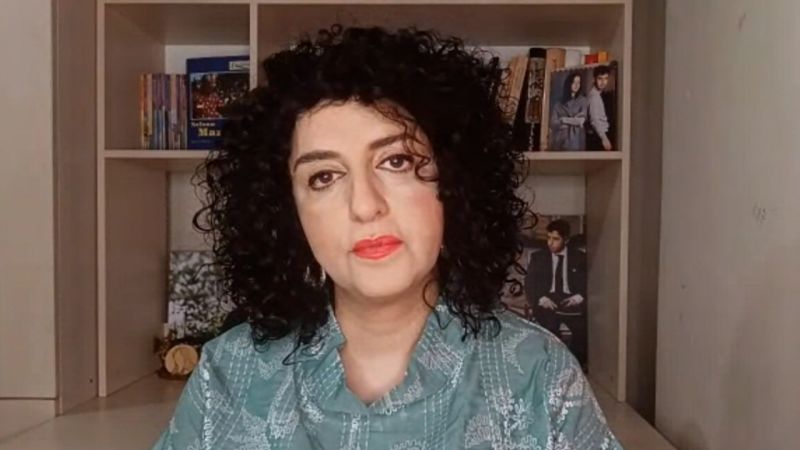The Assad regime has fallen. Why are foreign powers still targeting Syria?

Syria’s Bashar al-Assad and his years-long regime have fallen, but the country remains a battleground for an array of actors seeking to secure interests in what may emerge to be a dangerous power vacuum.
As Hayat Tahrir al-Sham (HTS) assumes de facto leadership, Syria is still under attack by neighboring countries, and remains a scene of infighting by groups with opposing interests. Some players appear to be seeking to exploit this potential power vacuum, keen to use the post-Assad terrain to expand control or take out foes.
Turkey is seeking to eliminate armed Kurdish militants, Israel has struck the remnants of the Syrian Arab Army’s capabilities and expanded its territorial control, while the United States has ramped up its strikes on ISIS and moved warships to the region.
Here’s what we know about the fighting in Syria.
Turkish interests in the northeast
Turkey has long had vested interests in Syria. Before Assad’s fall, President Recep Tayyip Erdogan had repeatedly pledged an imminent ground operation into northern Syria, aiming to empty the area of fighters allied to the Kurdistan Workers’ Party (PKK), a militant group that Turkey and the US deem a terrorist organization, as well as to create a safe zone for refugee return.
After the rebel offensive started almost two weeks ago, fighting between the Turkey-backed Syrian National Army (SNA) and Kurdish militants in the northeast erupted.
The Turkish government has long regarded Syrian Kurdish groups as part of or linked to the PKK. However, Kurdish forces served as key US partners in the fight against ISIS and control swathes of land in northeast Syria.
When Assad was successfully ousted by the HTS-led groups, open combat between the Turkish-backed SNA and Kurdish forces escalated over the past weeks.
Fears of a Turkish incursion have also not abated. On Tuesday, the Wall Street Journal cited unnamed US officials saying Turkey and its militia allies are building up forces near Kobani, a Kurdish majority city in Syria, with fears that a cross-border operation is imminent.
Israeli bombardment
On the same day rebels took over the Syrian capital Damascus, Israel started striking military assets that had belonged to Assad’s regime. In the days that followed, Israel escalated its bombardment, striking nearly 500 targets, destroying the navy and taking out, the Israeli military claims, 90% of Syria’s known surface-to-air missiles.
Israeli officials said that the strikes on Syrian military assets are to prevent them from falling “into the hands of extremists.”
The Israeli government has reveled in the downfall of Assad, a staunch ally of Iran who allowed his country to be used as a resupply route for Hezbollah in Lebanon. But it also fears what could come from radical Islamists governing Syria, which borders Israel in the occupied Golan Heights.
Its military also started advancing on the ground, capturing further territory in Syria. The Israel Defense Forces (IDF) now occupies Syria’s highest peak, Mount Hermon, a strategic position that overlooks Lebanon, Syria and Israel. The summit of Mount Hermon lies in a buffer zone that, until the fall of Assad, had separated Israeli and Syrian forces for 50 years.
The Syrian rebel leader Mohammad al-Jolani accused Israel of crossing “the lines of engagement” with its actions in Syria, while a group of the country’s neighbors called on Israel to withdraw its forces from all Syrian territories.
US fears of ISIS resurgence
The US has for years maintained a presence in Syria, partnering with the Kurdish-led Syrian Democratic Forces for anti-ISIS operations in the country. There are some 900 US troops stationed there, mostly in the northeast.
US bases have come under more attacks over the last year as Iran-backed armed groups supportive of Hamas in Gaza target American assets in Syria and Iraq, protesting US backing for Israel. The US has responded with airstrikes.
In the wake of Assad’s downfall, the US was clear that its mission against ISIS would continue. US Central Command (CENTCOM) has continued to strike locations in Syria that it says are known ISIS camps and operatives, fearing the group might take advantage of a potential power vacuum following Assad’s demise.
“CENTCOM, working with allies and partners in the region, will not allow ISIS to reconstitute and take advantage of the current situation in Syria,” said Gen. Michael Erik Kurilla, according to a statement from CENTCOM.
On Monday, CENTCOM said it killed “12 ISIS terrorists” in precision airstrikes, which are meant to prevent the group from seeking “opportunities to reconstitute in central Syria.”
“These recent strikes are in former Regime and Russian controlled areas ensuring pressure is maintained on ISIS,” CENTCOM said in its statement.
An added complication was resurgent fighting between the US-allied SDF and Turkish-backed militants. After Assad was topped, the SDF said it has come under attack by the Turkish-backed groups, some targeting ISIS detention facilities the SDF says it is trying to guard.
US Secretary of State Antony Blinken was in Ankara last week, meeting with his Turkish counterpart Hakan Fidan to discuss the situation in Syria – and the risk that renewed conflict in the north could provide an opening for ISIS’ revival.









